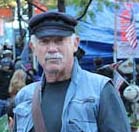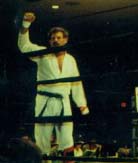Today we start an interview with a man who has led an amaz ing life – as a writer. Chuck Sasser has not only written about some amazing places, things and events, he’s lived them. His writing life is so interesting, we going to devote two days to this interview. Today, we’ll begin with how he got started.
ing life – as a writer. Chuck Sasser has not only written about some amazing places, things and events, he’s lived them. His writing life is so interesting, we going to devote two days to this interview. Today, we’ll begin with how he got started.
JRC: I’ve lost count of how many books you’ve published. Is that approaching 100 by now?
Sasser: I’ve authored or co-authored about 60 books, somewhere around 100 if you count anthologies, historical multiple-author books, contributions to TIME-LIFE and other similar coffee table type books.
JRC: So, when did you start writing and how did that come about?
Sasser: I was about 7 years old when my great-aunt gave me a box of books and I taught myself to read. We were migrant farm workers, sharecroppers, following the crops in eastern Oklahoma and western Arkansas. My dad could neither read nor write, my mom quit school after the 8th grade. We were described as “so poor that poverty was a step up.” The only books in our shacks were SEARS & Roebuck catalogues—and only because of their utility in the outhouse.
Books opened up a new outside world for me. I told my mom I was going to live many lives and write about them. She built me a desk out of old fruit crates and 1×8 pieces of lumber. I began getting up at 0300 each morning from then on to write at my desk using a kerosene lamp. (We had neither electricity nor plumbing.)
I sold my first piece when I was 15, for $25, when the most I could make picking cotton was about $3 a day. I’ve been writing ever since, including a stint as a Navy Journalist.
JRC: That might motivate one to write. You told me once about living I a storage shed with your family when you took up writing full-time. Correct, or an urban legend?
Sasser: In 1979 I was a homicide detective for the Tulsa Police Department when I resigned to write full-time as a freelancer. My second wife at the time, Kathy, had a two-year-old son. I bought 5 acres of land near the Illinois River in Sequoyah County, Oklahoma, and built in a single day an 8×16-foot “tool shed” of plywood and sheet iron roof. The three of us lived in the “tool shed” for 8 months while I built, with hand tools, our “real house.” It was in that tool shed that I began selling enough articles, short stories and other projects to begin making a living. It turned out pretty good eventually, although the second wife, like the first, is now long long—but I now have a ranch, a two-story house in the country, and make quite a good living at scribbling.
JRC: You write both fiction and non-fiction. Do some of those come in pairs: a non-fiction book on a subject, followed by a fiction book along the same lines?
 Sasser: I often pair nonfiction and fiction. A nonfiction will often be followed by a novel. For example, THE FIRST SEAL (story of Roy Boehm, founder of Navy SEALS) became also a novel, OPERATION NO MAN’S LAND (as Mike Martell).
Sasser: I often pair nonfiction and fiction. A nonfiction will often be followed by a novel. For example, THE FIRST SEAL (story of Roy Boehm, founder of Navy SEALS) became also a novel, OPERATION NO MAN’S LAND (as Mike Martell).
Nonfiction autobiography HOMICIDE! evolved into novel NO GENTLE STREETS.
My best-selling ONE SHOT-ONE KILL produced a number of fiction spinoffs such as THE RETURN and THE 100TH KILL.
GOING BONKERS: THE WACKY WORLD OF CULTURAL MADNESS produced novels such as LIBERTY CITY and A  THOUSAND YEARS OF DARKNESS.
THOUSAND YEARS OF DARKNESS.
My nonfiction autobiography ALWAYS A WARRIOR produced THE WAR LOVER.
I also use my research, etc., from nonfiction books to produce dozens of magazine articles and short stories.
JRC: That seem a little unusual, at least to my limited experience. Can you tell us a a little about how that works? Do you have any problems keeping the fiction from treading too close to the truth?
Sasser: Nonfiction and fiction are not that far apart, actually, as far as the telling of stories is concerned. I think all the best novels are based on some semblance of facts, some occurrence in history, in our lives or in lives around us. Take Ernest Hemingway, for example. Almost all of his best fiction was actually based on his experiences and on the experiences of those he knew. For example—A FAREWELL TO ARMS, was based on his wartime exploits during WWII in Italy. FOR WHOM THE BELL TOLLS was based on his Spanish war correspondence experience. ISLANDS IN THE STREAMS came from his sailing of his boat, PILAR, off Cuba during WWII searching for Nazi submarines. Many other authors actually use this technique as well.
JRC: We’re going to stop there for today. But on Tuesday, we’ll loo k at Big Foot, The last woman to claim land under the Homestead Act, and other adventures of Chuck Sasser, a Green Beret, and in 2001, he set a world’s record by making the first transcontinental flight in an ultralite Powered Parachute aircraft. Chuck has been a professional kick boxer, bronc rider, sky diver and college professor.
k at Big Foot, The last woman to claim land under the Homestead Act, and other adventures of Chuck Sasser, a Green Beret, and in 2001, he set a world’s record by making the first transcontinental flight in an ultralite Powered Parachute aircraft. Chuck has been a professional kick boxer, bronc rider, sky diver and college professor.
Don’t miss the second half of this interview. With Chuck, whatever you expect, it isn’t enough.

Thanks Jim. What a fascinating interview. I’m looking forward to the next installment.
Loved this interview. I’ve known Chuck for 8 years or so and am still fascinated by his life. He’s an inspiration to me and has been a great encourager. You just never know what he’s going to do next. One thing, for certain, he will write about it.
What an inspiration! Thanks for sharing.
Great interview and a fascinating person. What a great thing his mother did showing that kind of faith in him just as he was getting started.
Anxious to read part two. His background reminds me of one of my mentors, Richard Wheeler (author of The Bloody Battle For Suribachi and others), who built a cabin in the Pennsylvania woods and eked out a living writing limericks, jokes, whatever else might sell until his first book was published. Dick focused entirely on non-fiction. I like Sasser’s comment on the two not being far apart and how they can inspire duplicate efforts. Good interview, Jim.
Jim what a fascinating article, I’m looking forward to reading more about Chuck.
Chuck thank you for sharing (I’m sure) a tidbit of your life and exploits, the Non-fiction and Fiction combinations are interesting.
Augie
Wow! What an interesting man. Just reading that next to the last paragraph wore me out!! I look forward to the next installment.
Wonderful interview.
~Ann